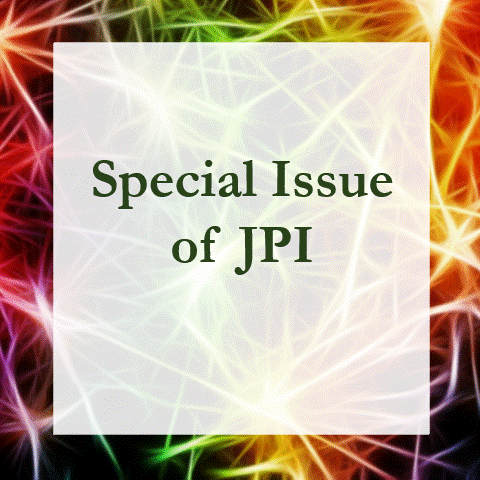

The investigation of aesthetics has primarily been conducted within the visual domain. This is not a surprise, as aesthetics has largely been associated with the perception and appreciation of visual media, such as traditional artworks, photography, and architecture. However, one doesn’t need to look far to realize that aesthetics extends beyond the visual domain. Media such as film and music introduce a unique and equally rich temporally changing visual and auditory experience. Product design, ranging from furniture to clothing, strongly depends on pleasant tactile evaluations. Studies involving the perception of 1/f statistics in vision have been particularly consistent in demonstrating a preference for a 1∕f structure resembling that of natural scenes, as well as systematic individual differences across a variety of visual objects. Interestingly, comparable findings have also been reached in the auditory and tactile domains. In this review, we discuss some of the current literature on the perception of 1∕f statistics across the contexts of different sensory modalities.
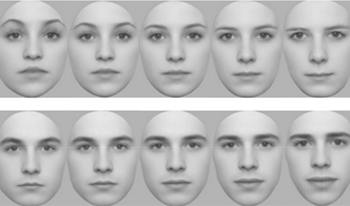
Studies of compensatory changes in visual functions in response to auditory loss have shown that enhancements tend to be restricted to the processing of specific visual features, such as motion in the periphery. Previous studies have also shown that deaf individuals can show greater face processing abilities in the central visual field. Enhancements in the processing of peripheral stimuli are thought to arise from a lack of auditory input and subsequent increase in the allocation of attentional resources to peripheral locations, while enhancements in face processing abilities are thought to be driven by experience with American sign language and not necessarily hearing loss. This combined with the fact that face processing abilities typically decline with eccentricity suggests that face processing enhancements may not extend to the periphery for deaf individuals. Using a face matching task, the authors examined whether deaf individuals’ enhanced ability to discriminate between faces extends to the peripheral visual field. Deaf participants were more accurate than hearing participants in discriminating faces presented both centrally and in the periphery. Their results support earlier findings that deaf individuals possess enhanced face discrimination abilities in the central visual field and further extend them by showing that these enhancements also occur in the periphery for more complex stimuli.

Olfaction is ingrained into the fabric of our daily lives and constitutes an integral part of our perceptual reality. Within this reality, there are crossmodal interactions and sensory expectations; understanding how olfaction interacts with other sensory modalities is crucial for augmenting interactive experiences with more advanced multisensorial capabilities. This knowledge will eventually lead to better designs, more engaging experiences, and enhancing the perceived quality of experience. Toward this end, the authors investigated a range of crossmodal correspondences between ten olfactory stimuli and different modalities (angularity of shapes, smoothness of texture, pleasantness, pitch, colors, musical genres, and emotional dimensions) using a sample of 68 observers. Consistent crossmodal correspondences were obtained in all cases, including our novel modality (the smoothness of texture). These associations are most likely mediated by both the knowledge of an odor’s identity and the underlying hedonic ratings: the knowledge of an odor’s identity plays a role when judging the emotional and musical dimensions but not for the angularity of shapes, smoothness of texture, perceived pleasantness, or pitch. Overall, hedonics was the most dominant mediator of crossmodal correspondences.
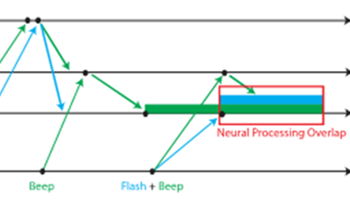
Postdiction occurs when later stimuli influence the perception of earlier stimuli. As the multisensory science field has grown in recent decades, the investigation of crossmodal postdictive phenomena has also expanded. Crossmodal postdiction can be considered (in its simplest form) the phenomenon in which later stimuli in one modality influence earlier stimuli in another modality (e.g., Intermodal Apparent Motion). Crossmodal postdiction can also appear in more nuanced forms, such as unimodal postdictive illusions (e.g., Apparent Motion) that are influenced by concurrent crossmodal stimuli (e.g., Crossmodal Influence on Apparent Motion), or crossmodal illusions (e.g., the Double Flash Illusion) that are influenced postdictively by a stimulus in one or the other modality (e.g., a visual stimulus in the Illusory Audiovisual Rabbit Illusion). In this review, these and other varied forms of crossmodal postdiction will be discussed. Three neuropsychological models proposed for unimodal postdiction will be adapted to the unique aspects of processing and integrating multisensory stimuli. Crossmodal postdiction opens a new window into sensory integration, and could potentially be used to identify new mechanisms of crossmodal crosstalk in the brain.

Despite more than 60 years of research, it has remained uncertain if and how realism affects the ventriloquist effect. Here, a sound localization experiment was run using spatially disparate audio-visual stimuli. The visual stimuli were presented using virtual reality, allowing for easy manipulation of the degree of realism of the stimuli. Starting from stimuli commonly used in ventriloquist experiments, i.e., a light flash and noise burst, a new factor was added or changed in each condition to investigate the effect of movement and realism without confounding the effects of an increased temporal correlation of the audio-visual stimuli. First, a distractor task was introduced to ensure that participants fixated their eye gaze during the experiment. Next, movement was added to the visual stimuli while maintaining a similar temporal correlation between the stimuli. Finally, by changing the stimuli from the flash and noise stimuli to the visuals of a bouncing ball that made a matching impact sound, the effect of realism was assessed. No evidence for an effect of realism and movement of the stimuli was found, suggesting that, in simple scenarios, the ventriloquist effect might not be affected by stimulus realism.
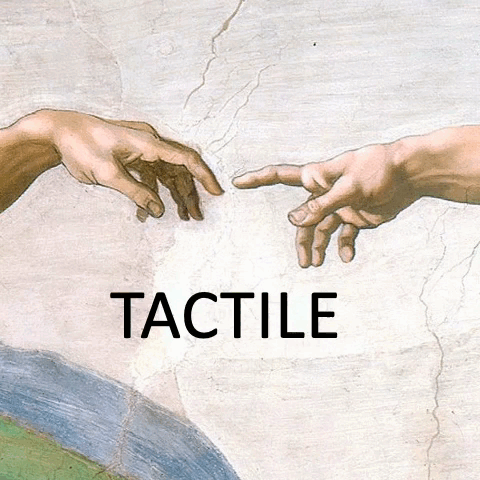
This exploratory study was designed to examine the effects of visual experience and specific texture parameters on both discriminative and aesthetic aspects of tactile perception. To this end, the authors conducted two experiments using a novel behavioral (ranking) approach in blind and (blindfolded) sighted individuals. Groups of congenitally blind, late blind, and (blindfolded) sighted participants made relative stimulus preference, aesthetic appreciation, and smoothness or softness judgment of two-dimensional (2D) or three-dimensional (3D) tactile surfaces through active touch. In both experiments, the aesthetic judgment was assessed on three affective dimensions, Relaxation, Hedonics, and Arousal, hypothesized to underlie visual aesthetics in a prior study. Results demonstrated that none of these behavioral judgments significantly varied as a function of visual experience in either experiment. However, irrespective of visual experience, significant differences were identified in all these behavioral judgments across the physical levels of smoothness or softness. In general, 2D smoothness or 3D softness discrimination was proportional to the level of physical smoothness or softness. Second, the smoother or softer tactile stimuli were preferred over the rougher or harder tactile stimuli. Third, the 3D affective structure of visual aesthetics appeared to be amodal and applicable to tactile aesthetics. However, analysis of the aesthetic profile across the affective dimensions revealed some striking differences between the forms of appreciation of smoothness and softness, uncovering unanticipated substructures in the nascent field of tactile aesthetics. While the physically softer 3D stimuli received higher ranks on all three affective dimensions, the physically smoother 2D stimuli received higher ranks on the Relaxation and Hedonics but lower ranks on the Arousal dimension. Moreover, the Relaxation and Hedonics ranks accurately overlapped with one another across all the physical levels of softness/hardness, but not across the physical levels of smoothness/roughness. These findings suggest that physical texture parameters not only affect basic tactile discrimination but differentially mediate tactile preferences, and aesthetic appreciation. The theoretical and practical implications of these novel findings are discussed.

To date, only a few studies have investigated the clinical translational value of multisensory integration. Our previous research has linked the magnitude of visual-somatosensory integration (measured behaviorally using simple reaction time tasks) to important cognitive (attention) and motor (balance, gait, and falls) outcomes in healthy older adults. While multisensory integration effects have been measured across a wide array of populations using various sensory combinations and different neuroscience research approaches, multisensory integration tests have not been systematically implemented in clinical settings. We recently developed a step-by-step protocol for administering and calculating multisensory integration effects to facilitate innovative and novel translational research across diverse clinical populations and age-ranges. In recognizing that patients with severe medical conditions and/or mobility limitations often experience difficulty traveling to research facilities or joining time-demanding research protocols, we deemed it necessary for patients to be able to benefit from multisensory testing. Using an established protocol and methodology, we developed a multisensory falls-screening tool called CatchUTM (an iPhone app) to quantify multisensory integration performance in clinical practice that is currently undergoing validation studies. Our goal is to facilitate the identification of patients who are at increased risk of falls and promote physician-initiated falls counseling during clinical visits (e.g., annual wellness, sick, or follow-up visits). This will thereby raise falls-awareness and foster physician efforts to alleviate disability, promote independence, and increase quality of life for our older adults. This conceptual overview highlights the potential of multisensory integration in predicting clinical outcomes from a research perspective, while also showcasing the practical application of a multisensory screening tool in routine clinical practice.
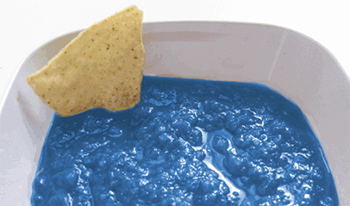
The colour and other visual appearance properties of food and drink constitute a key factor determining consumer acceptance and choice behaviour. Not only do consumers associate specific colours with particular tastes and flavours, but adding or changing the colour of food and drink can also dramatically affect taste/flavour perception. Surprisingly, even the colour of cups, cutlery, plates, packages, and the colour of the environment itself, have also been shown to influence multisensory flavour perception. The taste/flavour associations that we hold with colour are context-dependent, and are often based on statistical learning (though emotional mediation may also play a role). However, to date, neither the computational principles constraining these ubiquitous crossmodal effects nor the neural mechanisms underpinning the various crossmodal associations (or correspondences) that have been documented between colours and tastes/flavours have yet been established. It is currently unclear to what extent such colour-taste/flavour correspondences ought to be explained in terms of semantic congruency (i.e., statistical learning), and/or emotional mediation. Bayesian causal inference has become an increasingly important tool in helping researchers to understand (and predict) the multisensory interactions between the spatial senses of vision, audition, and touch. However, a network modelling approach may be of value moving forward. As made clear by this review, there are substantial challenges, both theoretical and practical, that will need to be overcome by those wanting to apply computational approaches both to understanding the integration of the chemical senses in the case of multisensory flavour perception, and to understanding the influence of colour thereon.